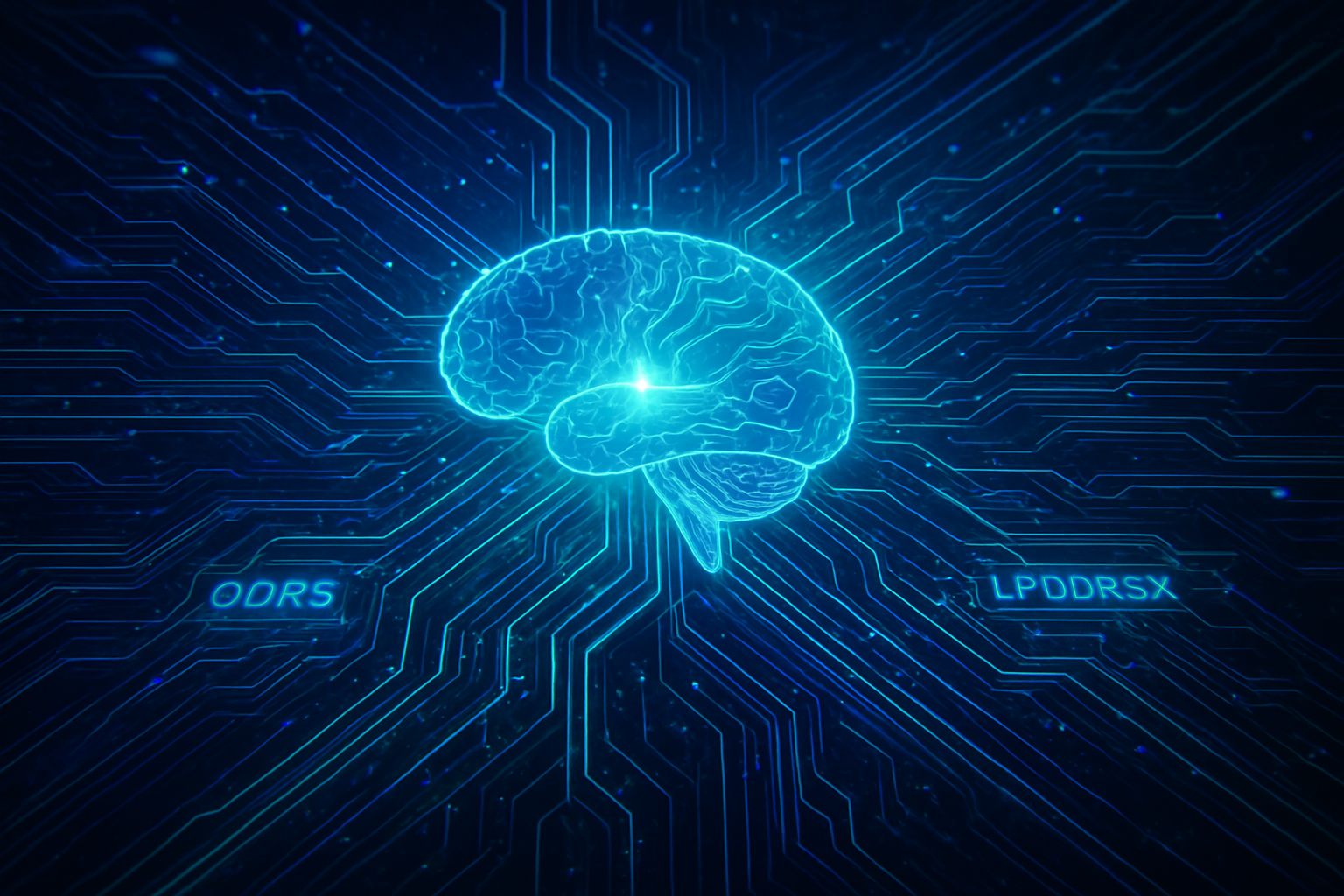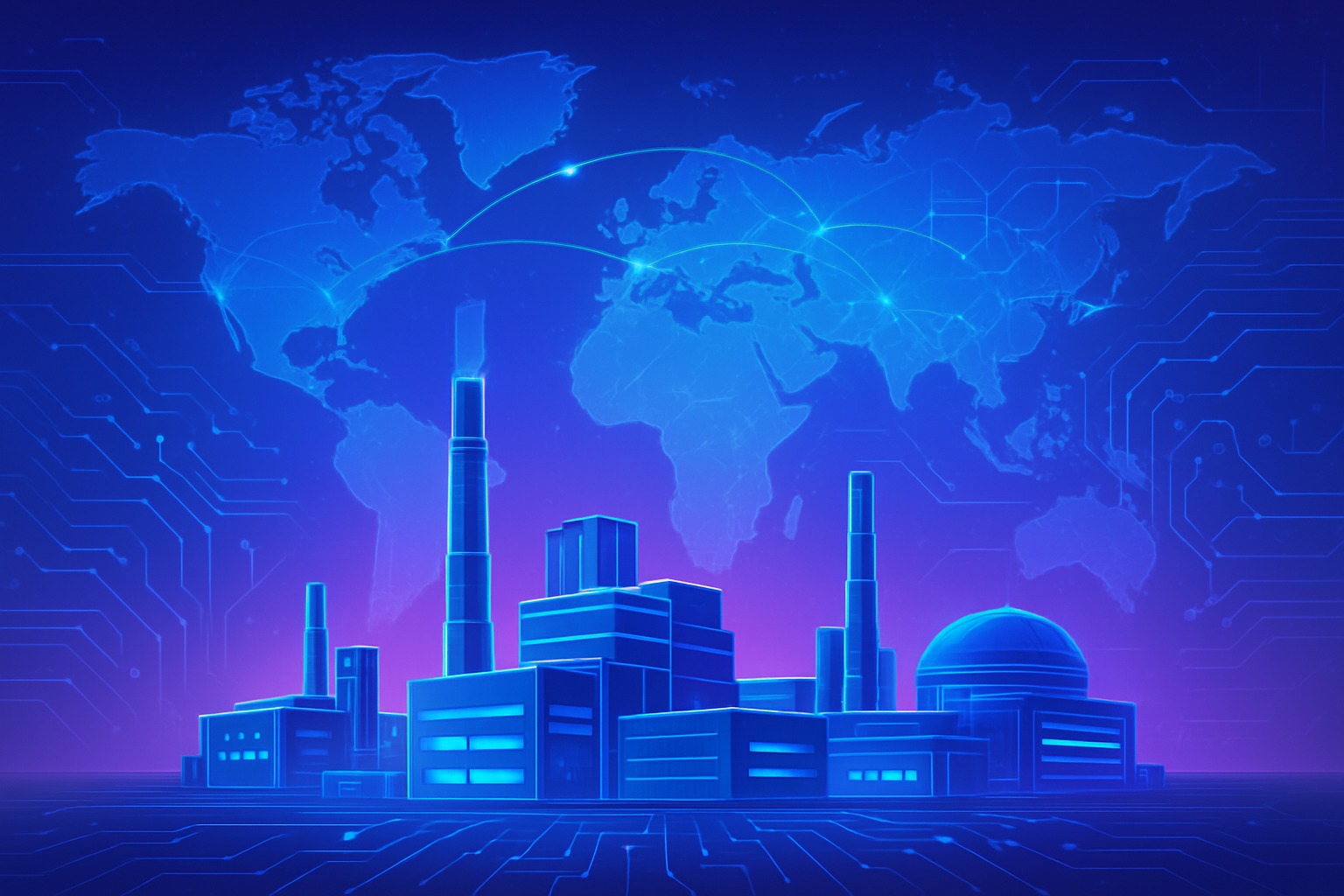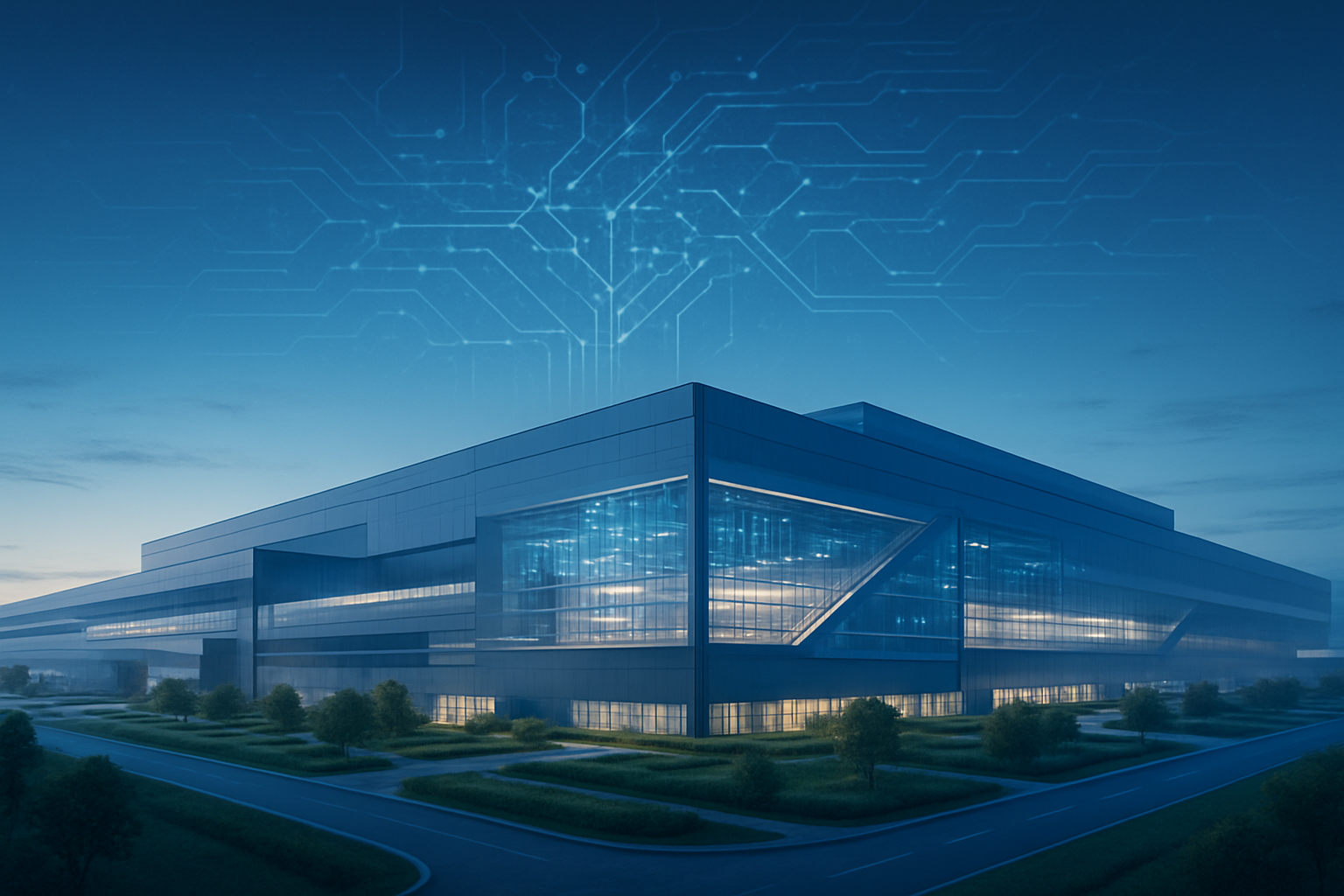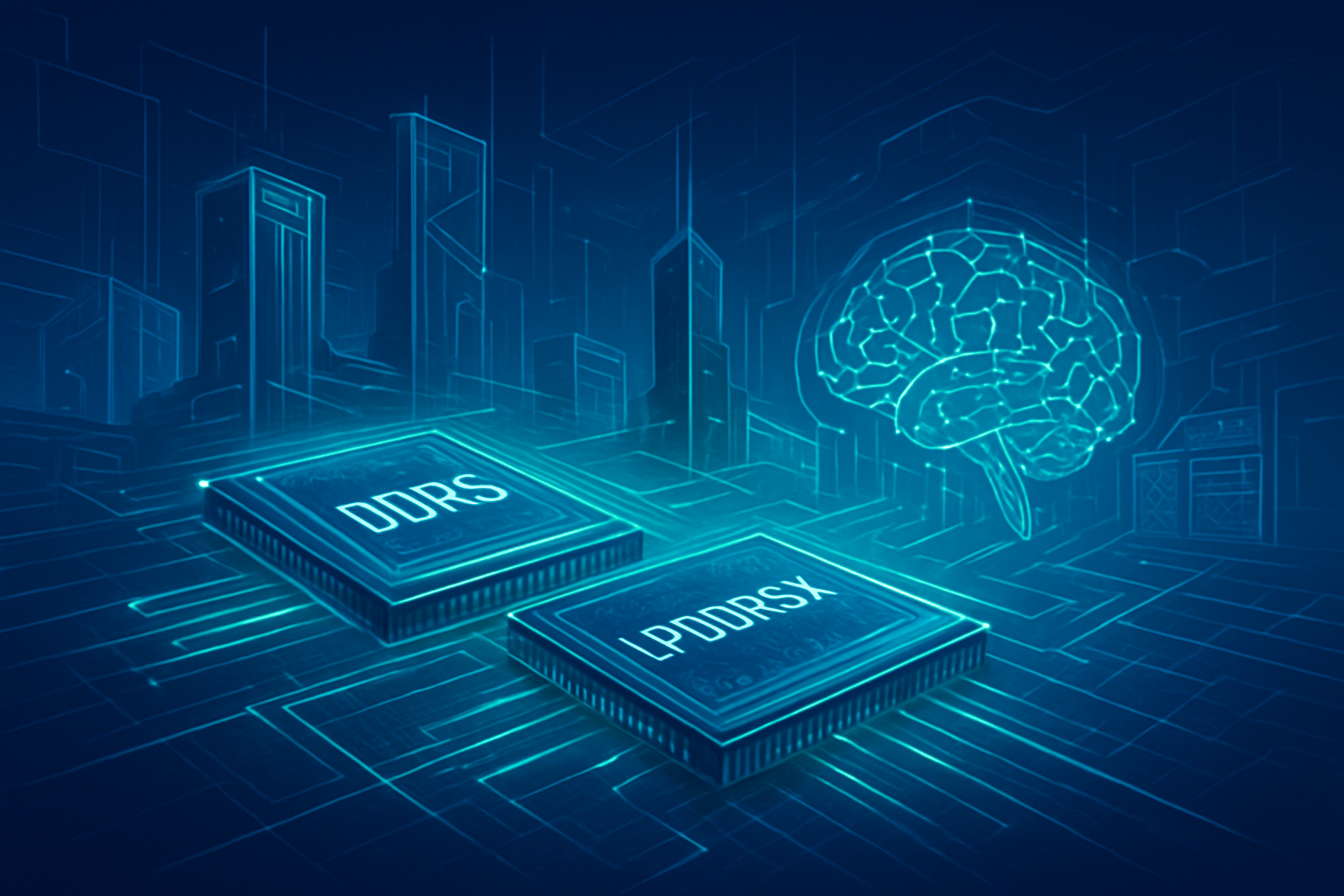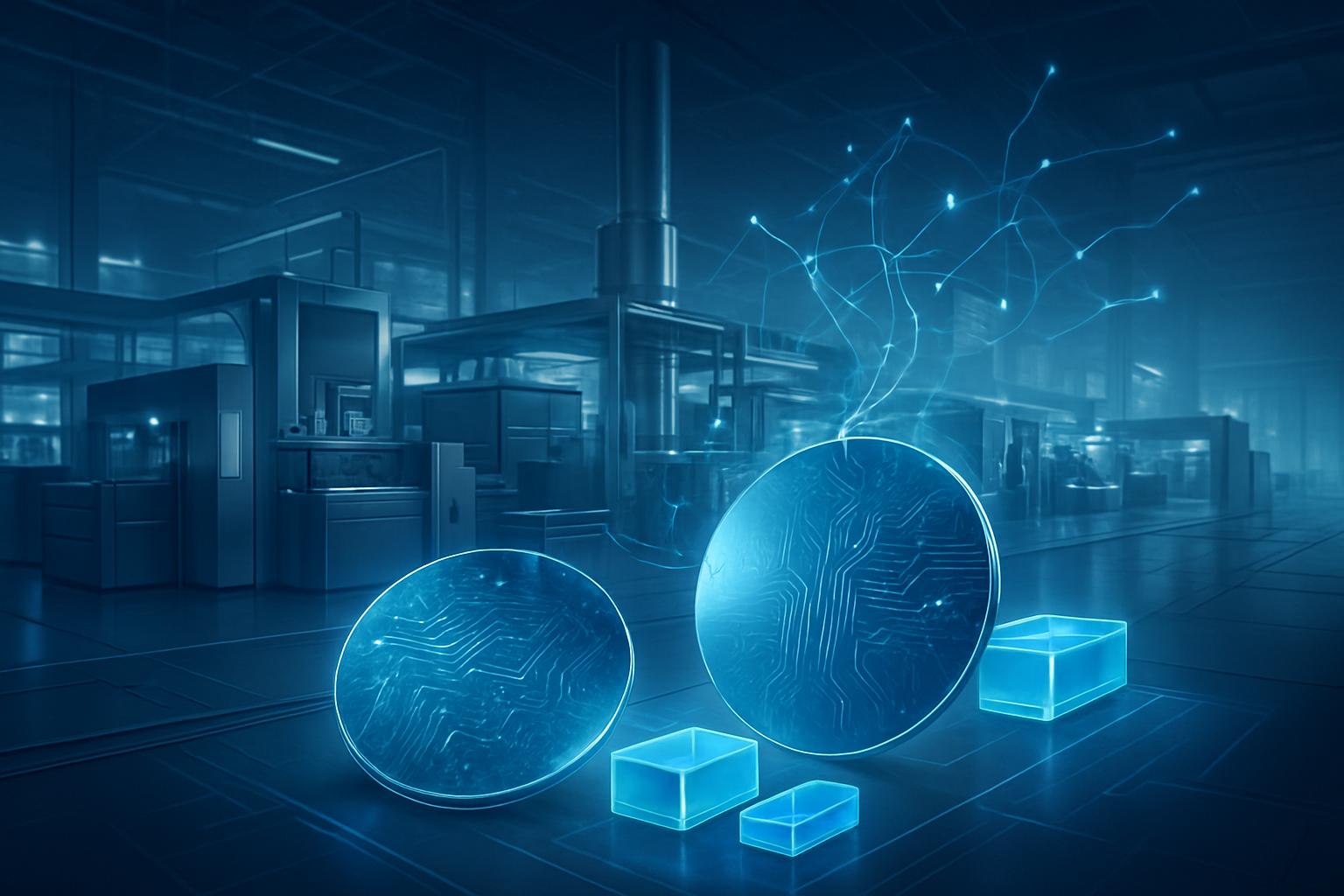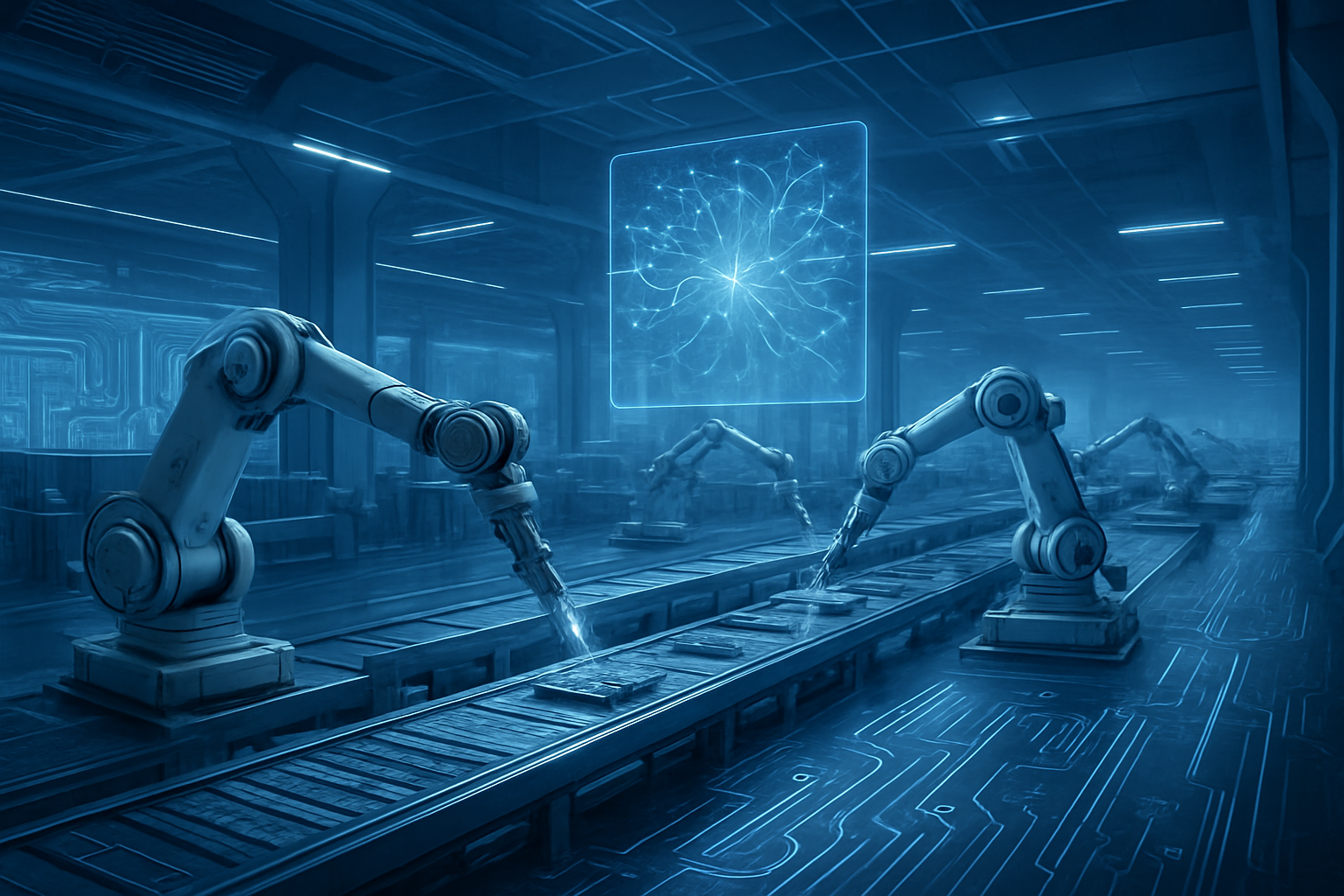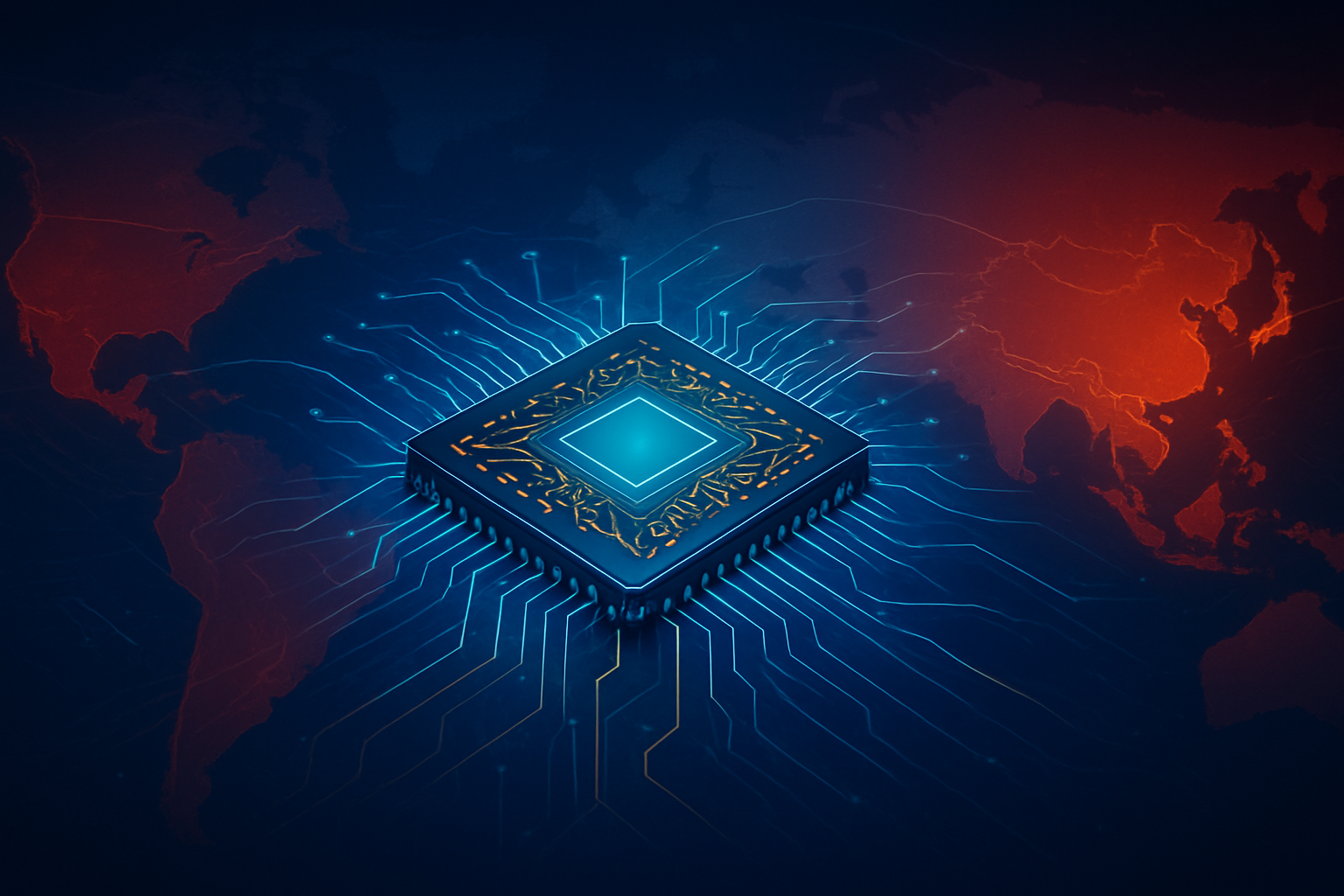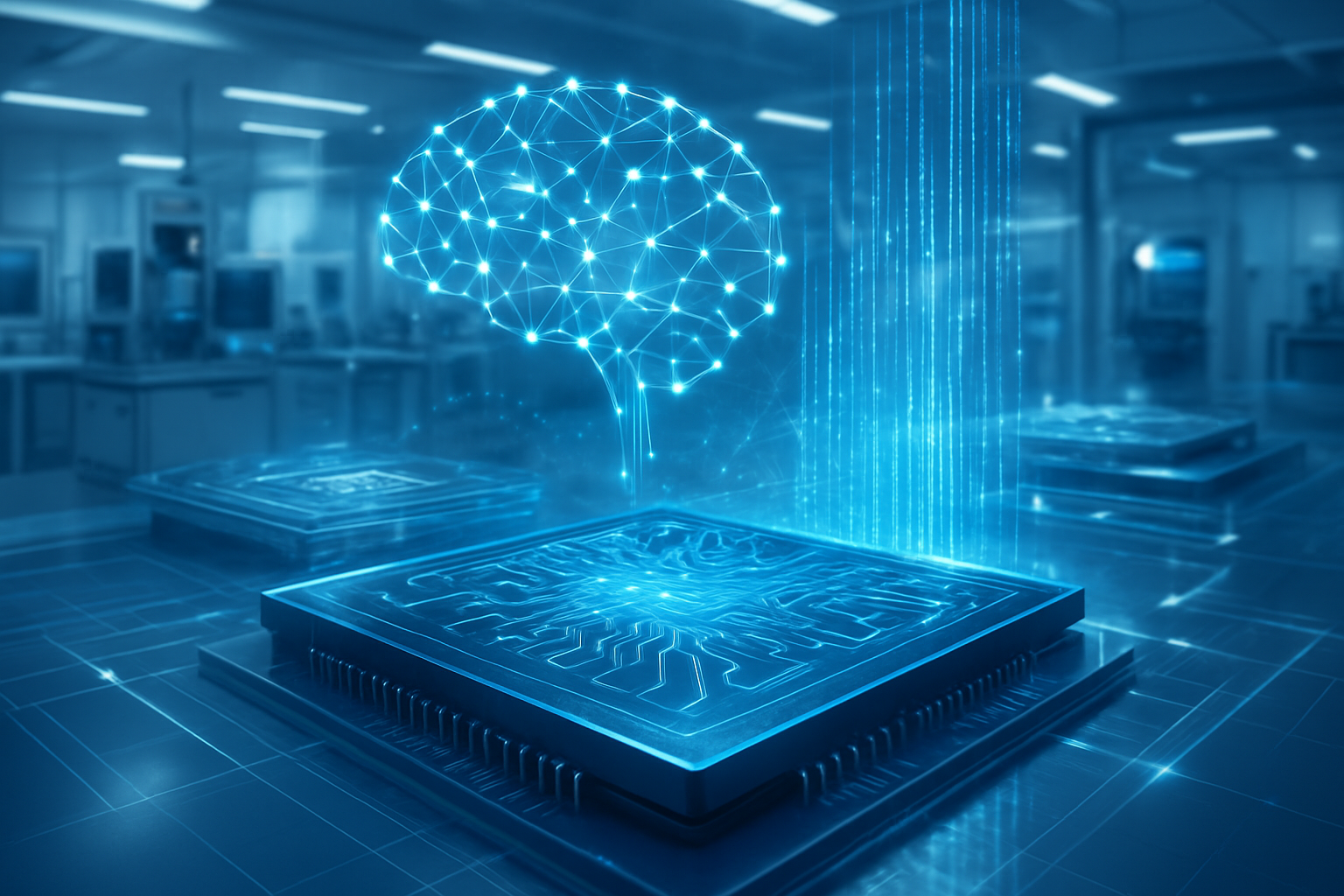The semiconductor landscape is undergoing a profound transformation, driven by the relentless march of artificial intelligence and the critical advancements in memory technologies. At the forefront of this evolution are DDR5 and LPDDR5X, next-generation memory standards that are not merely incremental upgrades but foundational shifts, enabling unprecedented speeds, capacities, and power efficiencies. As of late 2025, these innovations are reshaping market dynamics, intensifying competition, and grappling with a surge in demand that is leading to significant price volatility and strategic reallocations within the global semiconductor industry.
These cutting-edge memory solutions are proving indispensable in powering the increasingly complex and data-intensive workloads of modern AI, from sophisticated large language models in data centers to on-device AI in the palm of our hands. Their immediate significance lies in their ability to overcome previous computational bottlenecks, paving the way for more powerful, efficient, and ubiquitous AI applications across a wide spectrum of devices and infrastructures, while simultaneously creating new challenges and opportunities for memory manufacturers and AI developers alike.
Technical Prowess: Unpacking the Innovations in DDR5 and LPDDR5X
DDR5 (Double Data Rate 5) and LPDDR5X (Low Power Double Data Rate 5X) represent the pinnacle of current memory technology, each tailored for specific computing environments but both contributing significantly to the AI revolution. DDR5, primarily targeting high-performance computing, servers, and desktop PCs, has seen speeds escalate dramatically, with modules from manufacturers like CXMT now reaching up to 8000 MT/s (Megatransfers per second). This marks a substantial leap from earlier benchmarks, providing the immense bandwidth required to feed data-hungry AI processors. Capacities have also expanded, with 16 Gb and 24 Gb densities enabling individual DIMMs (Dual In-line Memory Modules) to reach an impressive 128 GB. Innovations extend to manufacturing, with Chinese memory maker CXMT progressing to a 16-nanometer process, yielding G4 DRAM cells that are 20% smaller. Furthermore, Renesas has developed the first DDR5 RCD (Registering Clock Driver) to support even higher speeds of 9600 MT/s on RDIMM modules, crucial for enterprise applications.
LPDDR5X, on the other hand, is engineered for mobile and power-sensitive applications, where energy efficiency is paramount. It has shattered previous speed records, with companies like Samsung (KRX: 005930) and CXMT achieving speeds up to 10,667 MT/s (or 10.7 Gbps), establishing it as the world's fastest mobile memory. CXMT began mass production of 8533 Mbps and 9600 Mbps LPDDR5X in May 2025, with the even faster 10667 Mbps version undergoing customer sampling. These chips come in 12 Gb and 16 Gb densities, supporting module capacities from 12 GB to 32 GB. A standout feature of LPDDR5X is its superior power efficiency, operating at an ultra-low voltage of 0.5 V to 0.6 V, significantly less than DDR5's 1.1 V, resulting in approximately 20% less power consumption than prior LPDDR5 generations. Samsung (KRX: 005930) has also achieved an industry-leading thinness of 0.65mm for its LPDDR5X, vital for slim mobile devices. Emerging form factors like LPCAMM2, which combine power efficiency, high performance, and space savings, are further pushing the boundaries of LPDDR5X applications, with performance comparable to two DDR5 SODIMMs.
These advancements differ significantly from previous memory generations by not only offering raw speed and capacity increases but also by introducing more sophisticated architectures and power management techniques. The shift from DDR4 to DDR5, for instance, involves higher burst lengths, improved channel efficiency, and on-die ECC (Error-Correcting Code) for enhanced reliability. LPDDR5X builds on LPDDR5 by pushing clock speeds and optimizing power further, making it ideal for the burgeoning edge AI market. Initial reactions from the AI research community and industry experts have been overwhelmingly positive, highlighting these technologies as critical enablers for the next wave of AI innovation, particularly in areas requiring real-time processing and efficient power consumption. However, the rapid increase in demand has also sparked concerns about supply chain stability and escalating costs.
Market Dynamics: Reshaping the AI Landscape
The advent of DDR5 and LPDDR5X is profoundly reshaping the competitive landscape for AI companies, tech giants, and startups alike. Companies that stand to benefit most are those at the forefront of AI development and deployment, requiring vast amounts of high-speed memory. This includes major cloud providers, AI hardware manufacturers, and developers of advanced AI models.
The competitive implications are significant. Traditionally dominant memory manufacturers like Samsung (KRX: 005930), SK Hynix (KRX: 000660), and Micron Technology (NASDAQ: MU) are facing new competition, particularly from China's CXMT, which has rapidly emerged as a key player in high-performance DDR5 and LPDDR5X production. This push for domestic production in China is driven by geopolitical considerations and a desire to reduce reliance on foreign suppliers, potentially leading to a more fragmented and competitive global memory market. This intensified competition could drive further innovation but also introduce complexities in supply chain management.
The demand surge, largely fueled by AI applications, has led to widespread DRAM shortages and significant price hikes. DRAM prices have reportedly increased by about 50% year-to-date (as of November 2025) and are projected to rise by another 30% in Q4 2025 and 20% in early 2026. Server-grade DDR5 prices are even expected to double year-over-year by late 2026. Samsung (KRX: 005930), for instance, has reportedly increased DDR5 chip prices by up to 60% since September 2025. This volatility impacts the cost structure of AI companies, potentially favoring those with larger capital reserves or strategic partnerships for memory procurement.
A "seismic shift" in the supply chain has been triggered by Nvidia's (NASDAQ: NVDA) decision to utilize LPDDR5X in some of its AI servers, such as the Grace and Vera CPUs. This move, aimed at reducing power consumption in AI data centers, is creating unprecedented demand for LPDDR5X, a memory type traditionally used in mobile devices. This strategic adoption by a major AI hardware innovator like Nvidia (NASDAQ: NVDA) underscores the strategic advantages offered by LPDDR5X's power efficiency for large-scale AI operations and is expected to further drive up server memory prices by late 2026. Memory manufacturers are increasingly reallocating production capacity towards High-Bandwidth Memory (HBM) and other AI-accelerator memory segments, further contributing to the scarcity and rising prices of more conventional DRAM types like DDR5 and LPDDR5X, albeit with the latter also seeing increased AI server adoption.
Wider Significance: Powering the AI Frontier
The advancements in DDR5 and LPDDR5X fit perfectly into the broader AI landscape, serving as critical enablers for the next generation of intelligent systems. These memory technologies are instrumental in addressing the "memory wall," a long-standing bottleneck where the speed of data transfer between the processor and memory limits the overall performance of ultra-high-speed computations, especially prevalent in AI workloads. By offering significantly higher bandwidth and lower latency, DDR5 and LPDDR5X allow AI processors to access and process vast datasets more efficiently, accelerating both the training of complex AI models and the real-time inference required for applications like autonomous driving, natural language processing, and advanced robotics.
The impact of these memory innovations is far-reaching. They are not only driving the performance of high-end AI data centers but are also crucial for the proliferation of on-device AI and edge computing. LPDDR5X, with its superior power efficiency and compact design, is particularly vital for integrating sophisticated AI capabilities into smartphones, tablets, laptops, and IoT devices, enabling more intelligent and responsive user experiences without relying solely on cloud connectivity. This shift towards edge AI has implications for data privacy, security, and the development of more personalized AI applications.
Potential concerns, however, accompany this rapid progress. The escalating demand for these advanced memory types, particularly from the AI sector, has led to significant supply chain pressures and price increases. This could create barriers for smaller AI startups or research labs with limited budgets, potentially exacerbating the resource gap between well-funded tech giants and emerging innovators. Furthermore, the geopolitical dimension, exemplified by China's push for domestic DDR5 production to circumvent export restrictions and reduce reliance on foreign HBM for its AI chips (like Huawei's Ascend 910B), highlights the strategic importance of memory technology in national AI ambitions and could lead to further fragmentation or regionalization of the memory market.
Comparing these developments to previous AI milestones, the current memory revolution is akin to the advancements in GPU technology that initially democratized deep learning. Just as powerful GPUs made complex neural networks trainable, high-speed, high-capacity, and power-efficient memory like DDR5 and LPDDR5X are now enabling these models to run faster, handle larger datasets, and be deployed in a wider array of environments, pushing the boundaries of what AI can achieve.
Future Developments: The Road Ahead for AI Memory
Looking ahead, the trajectory for DDR5 and LPDDR5X, and memory technologies in general, is one of continued innovation and specialization, driven by the insatiable demands of AI. In the near-term, we can expect further incremental improvements in speed and density for both standards. Manufacturers will likely push DDR5 beyond 8000 MT/s and LPDDR5X beyond 10,667 MT/s, alongside efforts to optimize power consumption even further, especially for server-grade LPDDR5X deployments. The mass production of emerging form factors like LPCAMM2, offering modular and upgradeable LPDDR5X solutions, is also anticipated to gain traction, particularly in laptops and compact workstations, blurring the lines between traditional mobile and desktop memory.
Long-term developments will likely see the integration of more sophisticated memory architectures designed specifically for AI. Concepts like Processing-in-Memory (PIM) and Near-Memory Computing (NMC), where some computational tasks are offloaded directly to the memory modules, are expected to move from research labs to commercial products. Memory developers like SK Hynix (KRX: 000660) are already exploring AI-D (AI-segmented DRAM) products, including LPDDR5R, MRDIMM, and SOCAMM2, alongside advanced solutions like CXL Memory Module (CMM) to directly address the "memory wall" by reducing data movement bottlenecks. These innovations promise to significantly enhance the efficiency of AI workloads by minimizing the need to constantly shuttle data between the CPU/GPU and main memory.
Potential applications and use cases on the horizon are vast. Beyond current AI applications, these memory advancements will enable more complex multi-modal AI models, real-time edge analytics for smart cities and industrial IoT, and highly realistic virtual and augmented reality experiences. Autonomous systems will benefit immensely from faster on-board processing capabilities, allowing for quicker decision-making and enhanced safety. The medical field could see breakthroughs in real-time diagnostic imaging and personalized treatment plans powered by localized AI.
However, several challenges need to be addressed. The escalating cost of advanced DRAM, driven by demand and geopolitical factors, remains a concern. Scaling manufacturing to meet the exploding demand without compromising quality or increasing prices excessively will be a continuous balancing act for memory makers. Furthermore, the complexity of integrating these new memory technologies with existing and future processor architectures will require close collaboration across the semiconductor ecosystem. Experts predict a continued focus on energy efficiency, not just raw performance, as AI data centers grapple with immense power consumption. The development of open standards for advanced memory interfaces will also be crucial to foster innovation and avoid vendor lock-in.
Comprehensive Wrap-up: A New Era for AI Performance
In summary, the rapid advancements in DDR5 and LPDDR5X memory technologies are not just technical feats but pivotal enablers for the current and future generations of artificial intelligence. Key takeaways include their unprecedented speeds and capacities, significant strides in power efficiency, and their critical role in overcoming data transfer bottlenecks that have historically limited AI performance. The emergence of new players like CXMT and the strategic adoption by tech giants like Nvidia (NASDAQ: NVDA) highlight a dynamic and competitive market, albeit one currently grappling with supply shortages and escalating prices.
This development marks a significant milestone in AI history, akin to the foundational breakthroughs in processing power that preceded it. It underscores the fact that AI progress is not solely about algorithms or processing units but also critically dependent on the underlying hardware infrastructure, with memory playing an increasingly central role. The ability to efficiently store and retrieve vast amounts of data at high speeds is fundamental to scaling AI models and deploying them effectively across diverse platforms.
The long-term impact of these memory innovations will be a more pervasive, powerful, and efficient AI ecosystem. From enhancing the capabilities of cloud-based supercomputers to embedding sophisticated intelligence directly into everyday devices, DDR5 and LPDDR5X are laying the groundwork for a future where AI is seamlessly integrated into every facet of technology and society.
In the coming weeks and months, industry observers should watch for continued announcements regarding even faster memory modules, further advancements in manufacturing processes, and the wider adoption of novel memory architectures like PIM and CXL. The ongoing dance between supply and demand, and its impact on memory pricing, will also be a critical indicator of market health and the pace of AI innovation. As AI continues its exponential growth, the evolution of memory technology will remain a cornerstone of its progress.
This content is intended for informational purposes only and represents analysis of current AI developments.
TokenRing AI delivers enterprise-grade solutions for multi-agent AI workflow orchestration, AI-powered development tools, and seamless remote collaboration platforms.
For more information, visit https://www.tokenring.ai/.
